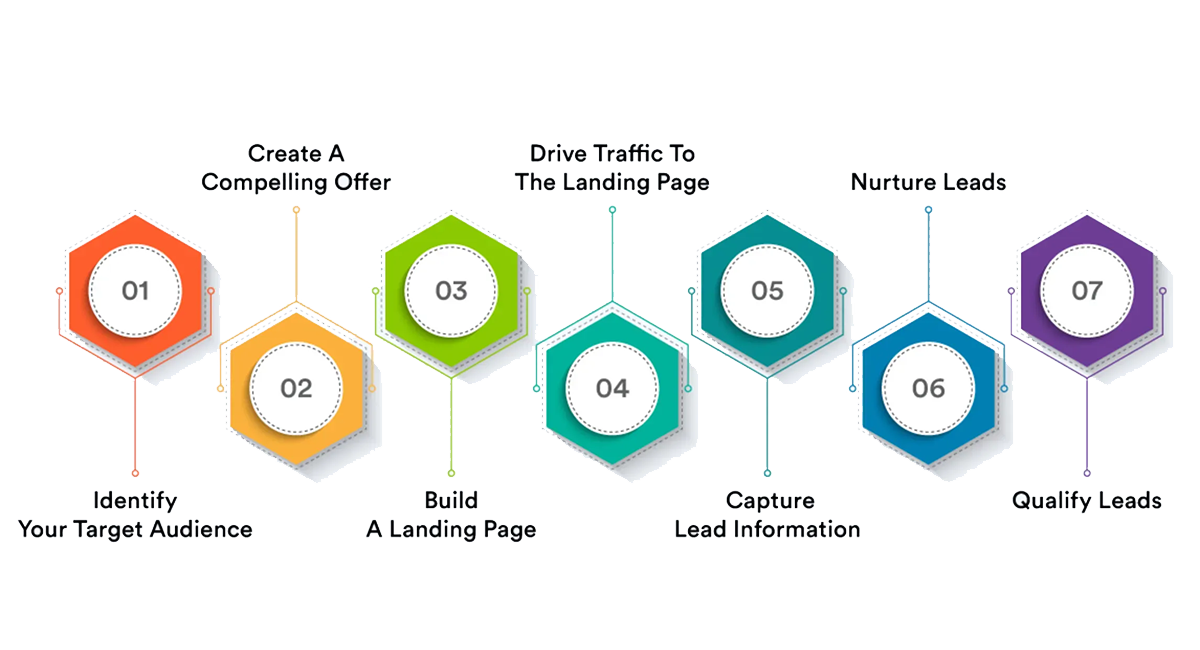Qualified PPC Lead Generation Process

Generating qualified leads is the lifeblood of any successful business. While organic strategies are crucial for long-term growth, paid channels offer a powerful way to accelerate lead generation and target specific audiences. But simply throwing money at ads isn't enough. A well-defined process is essential to maximise your ROI and ensure you're attracting leads that actually convert. This blog post will break down a robust paid channel qualified lead generation process, offering actionable insights to boost your sales pipeline.
1. Define Your Ideal Customer Profile (ICP):
Before even thinking about ad platforms, you need to know who you're trying to reach. A clearly defined ICP is the foundation of any successful lead generation campaign. Consider demographics, job titles, industry, pain points, and purchasing behaviour. The more specific you are, the better you can target your ads.
2. Choose the Right Paid Channels:
Not all platforms are created equal. Where you advertise depends entirely on your ICP. Consider these popular options:
- Google Ads: Ideal for targeting users actively searching for solutions like yours. Excellent for capturing intent-driven leads.
- Social Media Ads (Facebook, LinkedIn, Twitter, etc.): Great for reaching specific demographics and interests. Effective for building brand awareness and nurturing leads.
- Programmatic Advertising: Uses automation to target ads across a network of websites, allowing for highly specific targeting and retargeting.
- Industry-Specific Platforms: If your target audience congregates on specific platforms (e.g., specialised forums, industry publications), explore advertising opportunities there.
3. Craft Compelling Ad Copy and Creatives:
Your ads need to grab attention and resonate with your target audience. Focus on:
- Clear and Concise Messaging: Highlight the value proposition and address the specific pain points of your ICP.
- Strong Call to Action (CTA): Tell users exactly what you want them to do (e.g., "Download Now," "Request a Demo," "Get a Free Quote").
- Visually Appealing Creatives: Use high-quality images or videos that are relevant to your offer and target audience.
- A/B Testing: Experiment with different ad copy, creatives, and targeting options to see what performs best.
4. Develop High-Converting Landing Pages:
Driving traffic to your website isn't enough. You need dedicated landing pages designed to capture leads. These pages should:
- Reinforce the Ad Message: Maintain consistency between your ad copy and the landing page content.
- Highlight the Value Proposition: Clearly explain the benefits of your offer.
- Include a Simple and Compelling Form: Make it easy for visitors to submit their information.
- Optimise for Mobile: Ensure your landing pages are responsive and load quickly on all devices.
5. Implement Lead Qualification:
Not all leads are created equal. Implement a lead scoring system to prioritise leads based on their fit with your ICP and their engagement with your content. Consider factors like:
- Demographics: Do they match your target customer profile?
- Job Title and Company: Are they decision-makers or influencers?
- Engagement: Have they downloaded resources, visited key pages, or interacted with your content?
6. Nurture Your Leads:
Once you've captured a lead, don't let them go cold. Implement a lead nurturing strategy to keep them engaged and move them closer to a sale. This can include:
- Email Marketing: Send targeted emails with valuable content and offers.
- Retargeting Ads: Show ads to users who have previously interacted with your website or content.
- Personalised Communication: Reach out to high-potential leads with personalised messages.
7. Track and Analyse Your Results:
Continuous monitoring and optimisation are crucial for maximising your ROI. Track key metrics such as:
- Cost Per Lead (CPL): How much does it cost to acquire a lead?
- Conversion Rate: What percentage of leads convert into paying customers?
- Return on Ad Spend (ROAS): How much revenue are you generating for every dollar you spend on advertising?
8. Iterate and Optimise:
Based on your data analysis, make adjustments to your campaigns to improve performance. This may involve refining your targeting, tweaking your ad copy, or optimising your landing pages. The lead generation process is an ongoing cycle of testing, learning, and improvement.
Key Takeaways:
- A well-defined ICP is the cornerstone of successful paid lead generation.
- Choose the right platforms based on your target audience.
- Craft compelling ad copy and creatives that resonate with your ICP.
- Develop high-converting landing pages to capture leads.
- Implement lead qualification to prioritise high-potential leads.
- Nurture your leads to move them closer to a sale.
- Track, analyse, and optimise your campaigns for maximum ROI.
By following these steps, you can create a powerful paid channel-qualified lead generation process that drives significant growth for your business. Remember that consistency and continuous improvement are key to long-term success.
